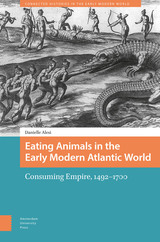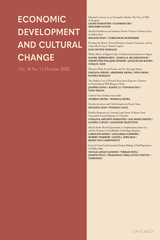9 books about Eichenbaum, Martin
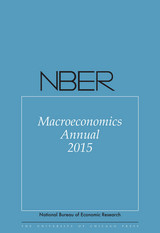
NBER Macroeconomics Annual 2015
Volume 30
Edited by Martin Eichenbaum and Jonathan Parker
University of Chicago Press Journals, 2016
This year, the NBER Macroeconomics Annual celebrates its thirtieth volume. The first two papers examine China’s macroeconomic development. “Trends and Cycles in China's Macroeconomy” by Chun Chang, Kaiji Chen, Daniel F. Waggoner, and Tao Zha outlines the key characteristics of growth and business cycles in China. “Demystifying the Chinese Housing Boom” by Hanming Fang, Quanlin Gu, Wei Xiong, and Li-An Zhou constructs a new house price index, showing that Chinese house prices have grown by ten percent per year over the past decade. The third paper, “External and Public Debt Crises” by Cristina Arellano, Andrew Atkeson, and Mark Wright, asks why there appear to be large differences across countries and subnational jurisdictions in the effect of rising public debts on economic outcomes. The fourth, “Networks and the Macroeconomy: An Empirical Exploration” by Daron Acemoglu, Ufuk Akcigit, and William Kerr, explains how the network structure of the US economy propagates the effect of gross output productivity shocks across upstream and downstream sectors. The fifth and sixth papers investigate the usefulness of surveys of household’s beliefs for understanding economic phenomena. “Expectations and Investment,” by Nicola Gennaioli, Yueran Ma, and Andrei Shleifer, demonstrates that a chief financial officer's expectations of a firm's future earnings growth is related to both the planned and actual future investment of that firm. “Declining Desire to Work and Downward Trends in Unemployment and Participation” by Regis Barnichon and Andrew Figura shows that an increasing number of prime-age Americans who are not in the labor force report no desire to work and that this decline accelerated during the second half of the 1990s.
[more]
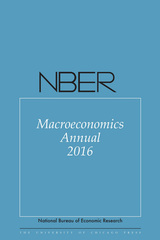
NBER Macroeconomics Annual 2016
Edited by Martin Eichenbaum and Jonathan Parker
University of Chicago Press Journals, 2017
The thirty-first edition of the NBER Macroeconomics Annual features theoretical and empirical research on central issues in contemporary macroeconomics. The first two papers are rigorous and data-driven analyses of the European financial crisis. The third paper introduces a new set of facts about economic growth and financial ratios as well as a new macrofinancial database for the study of historical financial booms and busts. The fourth paper studies the historical effects of Federal Reserve efforts to provide guidance about the future path of the funds rate. The fifth paper explores the distinctions between models of price setting and associated nominal frictions using data on price setting behavior. The sixth paper considers the possibility that the economy displays nonlinear dynamics that lead to cycles rather than long-term convergence to a steady state. The volume also includes a short paper on the decline in the rate of global economic growth.
[more]
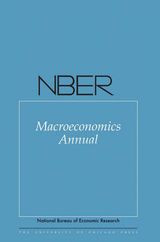
NBER Macroeconomics Annual 2017
Volume 32
Edited by Jonathan A. Parker and Martin Eichenbaum
University of Chicago Press Journals, 2018
Volume 32 of the NBER Macroeconomics Annual features six theoretical and empirical studies of important issues in contemporary macroeconomics, and a keynote address by former IMF chief economist Olivier Blanchard. In one study, SeHyoun Ahn, Greg Kaplan, Benjamin Moll, Thomas Winberry, and Christian Wolf examine the dynamics of consumption expenditures in non-representative-agent macroeconomic models. In another, John Cochrane asks which macro models most naturally explain the post-financial-crisis macroeconomic environment, which is characterized by the co-existence of low and nonvolatile inflation rates, near-zero short-term interest rates, and an explosion in monetary aggregates. Manuel Adelino, Antoinette Schoar, and Felipe Severino examine the causes of the lending boom that precipitated the recent U.S. financial crisis and Great Recession. Steven Durlauf and Ananth Seshadri investigate whether increases in income inequality cause lower levels of economic mobility and opportunity. Charles Manski explores the formation of expectations, considering the efficacy of directly measuring beliefs through surveys as an alternative to making the assumption of rational expectations. In the final research paper, Efraim Benmelech and Nittai Bergman analyze the sharp declines in debt issuance and the evaporation of market liquidity that coincide with most financial crises. Blanchard’s keynote address discusses which distortions are central to understanding short-run macroeconomic fluctuations.
[more]
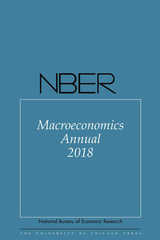
NBER Macroeconomics Annual 2018
Volume 33
Edited by Martin Eichenbaum and Jonathan A. Parker
University of Chicago Press Journals, 2019
This volume contains six studies on current topics in macroeconomics. The first shows that while assuming rational expectations is unrealistic, a finite-horizon forward planning model can yield results similar to those of a rational expectations equilibrium. The second explores the aggregate risk of the U.S. financial sector, and in particular whether it is safer now than before the 2008 financial crisis. The third analyzes “factorless income,” output that is not measured as capital or labor income. Next, a study argues that the financial crisis increased the perceived risk of a very bad economic and financial outcome, and explores the propagation of large, rare shocks. The next paper documents the substantial recent changes in the manufacturing sector and the decline in employment among prime-aged Americans since 2000. The last paper analyzes the dynamic macroeconomic effects of border adjustment taxes.
[more]
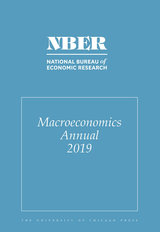
NBER Macroeconomics Annual 2019
Volume 34
Edited by Martin Eichenbaum, Erik Hurst, and Jonathan A. Parker
University of Chicago Press Journals, 2020
The thirty-fourth volume of the NBER Macroeconomics Annual features theoretical and empirical studies of issues in contemporary macroeconomics and a keynote address by James Stock, a member of President Obama’s Council of Economic Advisers from 2013 to 2014. Chong-en Bai, Chang-Tai Hsieh, and Zheng Song examine the “special deals” provided by Chinese local governments to favored private firms and their effects on economic growth. Matias Covarrubias, Germán Gutiérrez, and Thomas Philippon study the evolution of profits, investment, and market shares in US industries over the past forty years and find evidence of inefficient concentration and barriers to entry since 2000. David Debortoli, Jordi Galí, and Luca Gambetti assess whether recent economic performance was affected by a binding zero lower bound constraint on the interest rate. Michael McLeay and Silvana Tenreyro explain why it is difficult to empirically identify the Phillips curve (a key element of the policy framework used by central banks) using aggregate data. The authors suggest using regional variation in unemployment and inflation to estimate the relationship between these variables. Margherita Borella, Mariacristina De Nardi, and Fang Yang examine the effects of shorter life expectancies, higher medical expenses, and lower wages for white, non-college-educated Americans born in the 1960s on labor supply and retirement savings. Nir Jaimovich, Sergio Rebelo, Arlene Wong, and Miao Ben Zhang investigate the role that increases in the quality of the goods consumed (“trading up”) played in the rise of the skill premium that occurred in the last four decades.
[more]
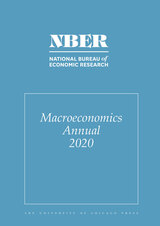
NBER Macroeconomics Annual 2020
Volume 35
Edited by Martin Eichenbaum and Erik Hurst
University of Chicago Press Journals, 2021
NBER Macroeconomics Annual 2020 presents research by leading scholars on central issues in contemporary macroeconomics. George-Marios Angeletos, Zhen Huo, and Karthik Sastry ask how to model expectations without rational expectations. They find that in response to business cycle shocks, expectations underreact initially but eventually overshoot, which in their view favors models with dispersed, noisy information and overextrapolation of expectations. Next, Esteban Rossi-Hansberg, Pierre-Daniel Sarte, and Nicholas Trachter contrast the patterns of rising aggregate firm market concentration with falling market concentration over time at the local level. Some associate rising concentration with less competition and more market power, but because most product markets are local, studying changes in local competition, as opposed to trends in aggregate competition, provides important insights. Adam Guren, Alisdair McKay, Emi Nakamura, and Jón Steinsson develop a novel econometric procedure to recover structural parameters using cross-region variation, for example, to estimate direct effects of housing wealth changes on individual household consumption. To avoid confounding direct and indirect effects, the authors isolate the direct effect of house price changes on consumption by using other estimates of demand multipliers from the local government spending literature to deflate estimates of the total effect of local consumption on local house prices. Peter Klenow and Huiyu Li examine the sources of reduced productivity growth by quantifying the contribution of innovation to economic growth. They find that young firms generate roughly half the productivity growth, most of the changes in productivity during the mid-1990s are accounted for by older firms, and most growth results from quality improvements on incumbents’ own products. In the fifth chapter, Fatih Guvenen, Greg Kaplan, and Jae Song use detailed micro panel data from the Social Security Administration to assess the progress women have made into the top 1% and top 0.1% of the income distribution over time. Finally, Joachim Hubmer, Per Krusell, and Anthony Smith Jr. explore the reasons for growing wealth inequality across the developed world. They argue that the significant drop in tax progressivity starting in the late 1970s was the most important source of growing wealth inequality in the United States. The sharp observed increases in earnings inequality and the falling labor share cannot account for the bulk of the increase in wealth inequality.
[more]
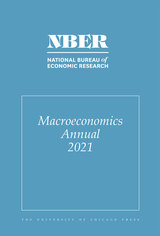
NBER Macroeconomics Annual 2021
Volume 36
Edited by Martin Eichenbaum and Erik Hurst
University of Chicago Press Journals, 2022
The NBER Macroeconomics Annual 2021 presents research-central issues in contemporary macroeconomics. Robert Hall and Marianna Kudlyak examine unemployment dynamics during economic recoveries. They present new empirical findings and explore models in which the labor market gradually draws down the stock of unemployed workers in the aftermath of a downturn. Titan Alon, Sena Coskun, Matthias Doepke, David Koll, and Michèle Tertilt analyze the relative decline in employment of women during the COVID-19 pandemic and the associated global recession. They show that increased childcare needs, which fell more heavily on women, and differences in occupations both contributed. In the case of the US, however, each of these factors account for less than 20% of the gender gap in hours worked during the pandemic. Richard Rogerson and Johanna Wallenius study the employment rates of older workers in OECD countries over the last forty years. An expansion of institutions incentivizing retirement, concurrent with negative aggregate shocks between 1970 and 1995, led to falling employment rates. This trend started to reverse in the mid-1990s when many of these institutions, such as public pension programs, were cut back. Michael Barnett, William Brock, and Lars Peter Hansen explore the consequences of risk, ambiguity, and model misspecification in climate policy design. They consider carbon emissions pricing and the effects of different sources of uncertainty—such as future information about environmental damage, uncertainties in carbon and temperature dynamics and damage functions, and the role of future green technologies—on policy design. Michael Kremer, Jack Willis, and Yang You present new evidence suggesting a steady trend toward income convergence across countries since the late 1980s. They find convergence in various determinants of economic growth across countries and a flattening of the relationship between growth and these determinants. The paper challenges theories of growth arising after earlier rejections of the neoclassical growth model.
[more]
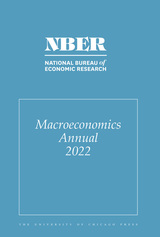
NBER Macroeconomics Annual, 2022
Volume 37
Edited by Martin Eichenbaum, Erik Hurst, and Valerie Ramey
University of Chicago Press Journals, 2023
Authoritative takes on the most current and pressing issues in macroeconomics today.
The NBER Macroeconomics Annual provides a forum for leading economists to participate in important debates in macroeconomics and to report on major developments in macroeconomic analysis and policy.
The NBER Macroeconomics Annual brings together leading scholars to discuss five research papers on central issues in contemporary macroeconomics. First, Andrea Eisfeldt, Antonio Falato, and Mindy Xiaolan document the rise of a new class of worker that receives part of its labor income as equity-based compensation, its role in the recent decline in the labor share of income, and implications for the returns to skilled labor and the implied capital-skill complementarity. Next, Michael Bauer and Eric Swanson focus on monetary policy shocks and argue the correlation between estimated monetary surprises and previously available information can be explained by uncertainty about the parameters of the monetary policy rule. Using new data and methods they find effects of monetary policy on macroeconomic variables that are much larger than previously estimated. Job Boerma and Loukas Karabarbounis provide a framework for quantitatively exploring the gap in wealth between White and Black Americans over the past 150 years and examine the effectiveness of reparations as a tool for closing this gap. Guido Menzio considers workers who do not have rational expectations, and whose “stubborn” beliefs change the response of wages to technology shocks, resulting in sticky wages. He finds that the larger the fraction of workers with stubborn beliefs, the more volatile unemployment is. Finally, Rishabh Aggarwal, Adrien Auclert, Matthew Rognlie, and Ludwig Straub investigate the growth—particularly in the United States—of private savings, current account deficits, and fiscal deficits after 2020. They argue that fiscal deficits lead to large and persistent increases in private savings and current account deficits.
The NBER Macroeconomics Annual provides a forum for leading economists to participate in important debates in macroeconomics and to report on major developments in macroeconomic analysis and policy.
The NBER Macroeconomics Annual brings together leading scholars to discuss five research papers on central issues in contemporary macroeconomics. First, Andrea Eisfeldt, Antonio Falato, and Mindy Xiaolan document the rise of a new class of worker that receives part of its labor income as equity-based compensation, its role in the recent decline in the labor share of income, and implications for the returns to skilled labor and the implied capital-skill complementarity. Next, Michael Bauer and Eric Swanson focus on monetary policy shocks and argue the correlation between estimated monetary surprises and previously available information can be explained by uncertainty about the parameters of the monetary policy rule. Using new data and methods they find effects of monetary policy on macroeconomic variables that are much larger than previously estimated. Job Boerma and Loukas Karabarbounis provide a framework for quantitatively exploring the gap in wealth between White and Black Americans over the past 150 years and examine the effectiveness of reparations as a tool for closing this gap. Guido Menzio considers workers who do not have rational expectations, and whose “stubborn” beliefs change the response of wages to technology shocks, resulting in sticky wages. He finds that the larger the fraction of workers with stubborn beliefs, the more volatile unemployment is. Finally, Rishabh Aggarwal, Adrien Auclert, Matthew Rognlie, and Ludwig Straub investigate the growth—particularly in the United States—of private savings, current account deficits, and fiscal deficits after 2020. They argue that fiscal deficits lead to large and persistent increases in private savings and current account deficits.
[more]

NBER Macroeconomics Annual, 2024
Volume 39
Edited by Martin Eichenbaum, John Leahy, and Valerie Ramey
University of Chicago Press Journals, 2025
Provides a forum for leading economists to participate in important debates in macroeconomics and to report on major developments in macroeconomic analysis and policy.
The NBER Macroeconomics Annual presents research on central issues in contemporary macroeconomics. Martin Kornejew, Chen Lian, Yueran Ma, Pablo Ottonello, and Diego Perez investigate the role of bankruptcy institutions in mitigating the economic fallout of credit crunches following booms and find that efficient institutions reduce the adverse effect of credit tightening on GDP. Santiago Camara, Lawrence Christiano, and Hüsnü Dalgic analyze the global effects of US monetary policy shocks, with particular attention to trade channels and financial frictions, and find that tighter US monetary policy leads to more pronounced contractions in emerging markets than in advanced economies. David Altig, Alan Auerbach, Erin Eidschun, Laurence Kotlikoff, and Victor Yifan Ye assess the welfare costs of inflation through interactions with tax and benefit programs and show that imperfect indexation leads to welfare losses for some households and gains for others. Paul Beaudry, Chenyu Hou, and Franck Portier examine inflation dynamics, and find that supply shocks and inflation expectations are pivotal for explaining them. Finally, Davide Debortoli and Jordi Galí develop a simplified two-agent new Keynesian (TANK) model to emulate more complex heterogeneous agent new Keynesian (HANK) models, and use it to examine the many channels through which heterogeneity influences aggregate fluctuations.
The NBER Macroeconomics Annual presents research on central issues in contemporary macroeconomics. Martin Kornejew, Chen Lian, Yueran Ma, Pablo Ottonello, and Diego Perez investigate the role of bankruptcy institutions in mitigating the economic fallout of credit crunches following booms and find that efficient institutions reduce the adverse effect of credit tightening on GDP. Santiago Camara, Lawrence Christiano, and Hüsnü Dalgic analyze the global effects of US monetary policy shocks, with particular attention to trade channels and financial frictions, and find that tighter US monetary policy leads to more pronounced contractions in emerging markets than in advanced economies. David Altig, Alan Auerbach, Erin Eidschun, Laurence Kotlikoff, and Victor Yifan Ye assess the welfare costs of inflation through interactions with tax and benefit programs and show that imperfect indexation leads to welfare losses for some households and gains for others. Paul Beaudry, Chenyu Hou, and Franck Portier examine inflation dynamics, and find that supply shocks and inflation expectations are pivotal for explaining them. Finally, Davide Debortoli and Jordi Galí develop a simplified two-agent new Keynesian (TANK) model to emulate more complex heterogeneous agent new Keynesian (HANK) models, and use it to examine the many channels through which heterogeneity influences aggregate fluctuations.
[more]
READERS
Browse our collection.
PUBLISHERS
See BiblioVault's publisher services.
STUDENT SERVICES
Files for college accessibility offices.
UChicago Accessibility Resources
home | accessibility | search | about | contact us
BiblioVault ® 2001 - 2025
The University of Chicago Press


